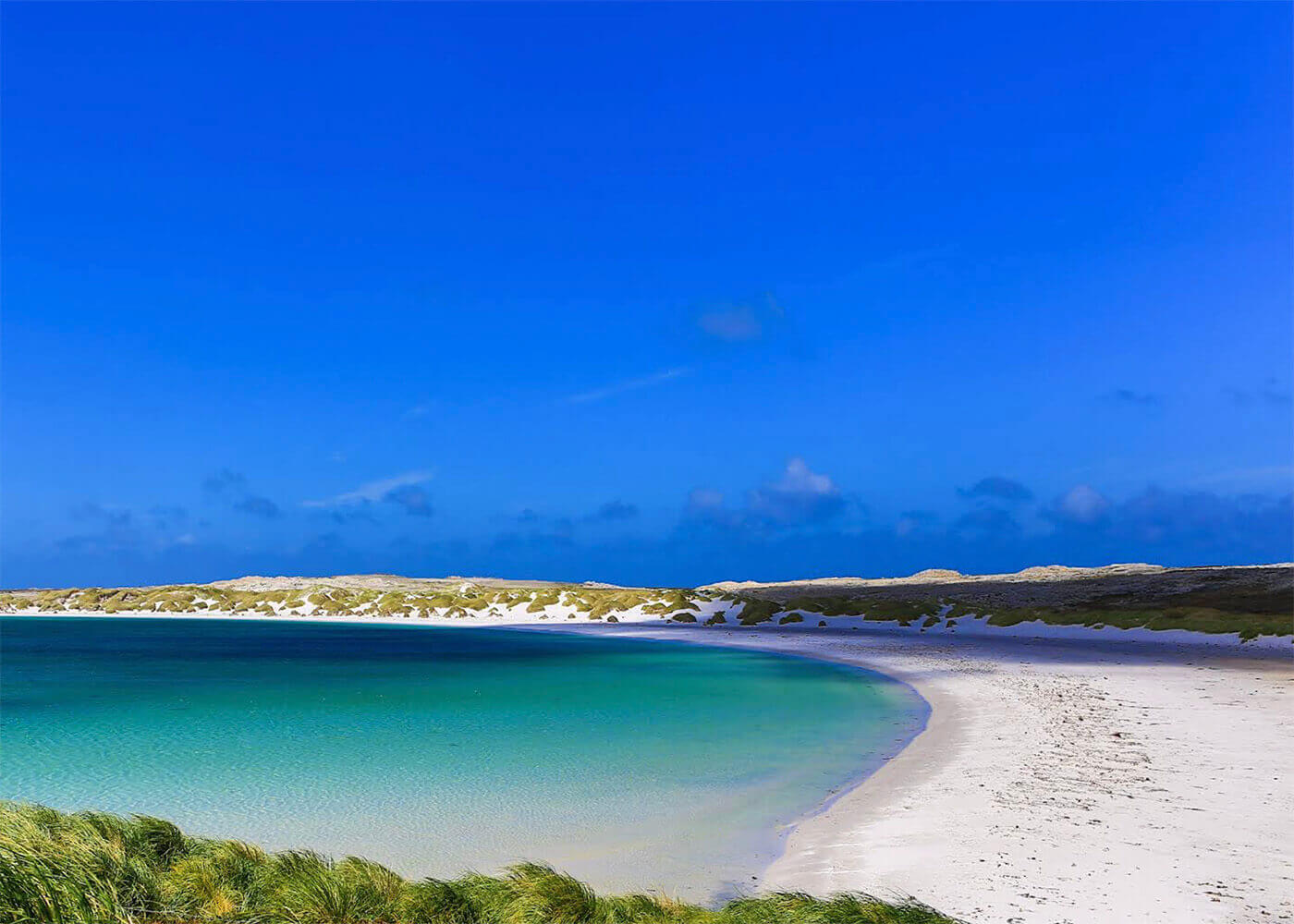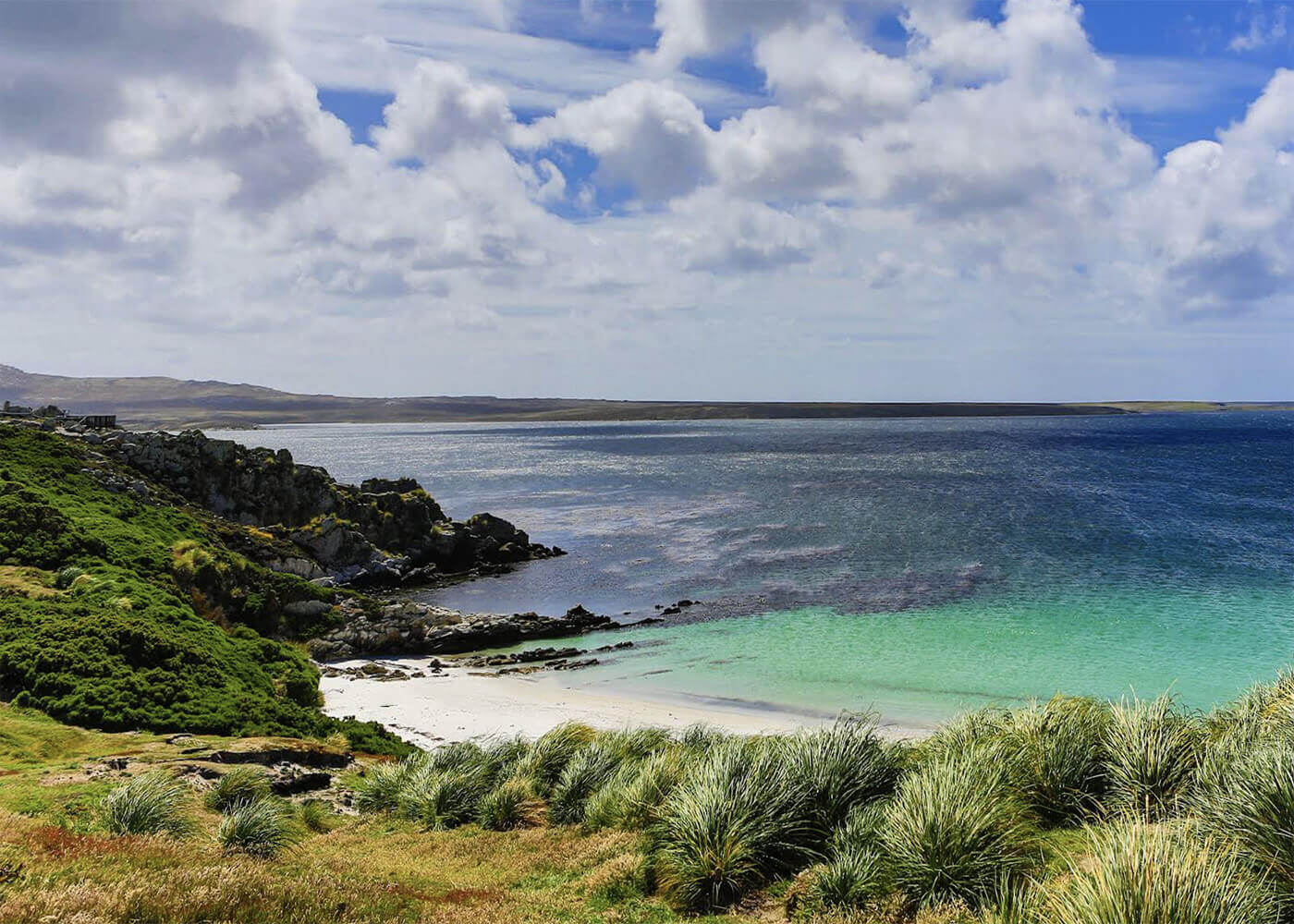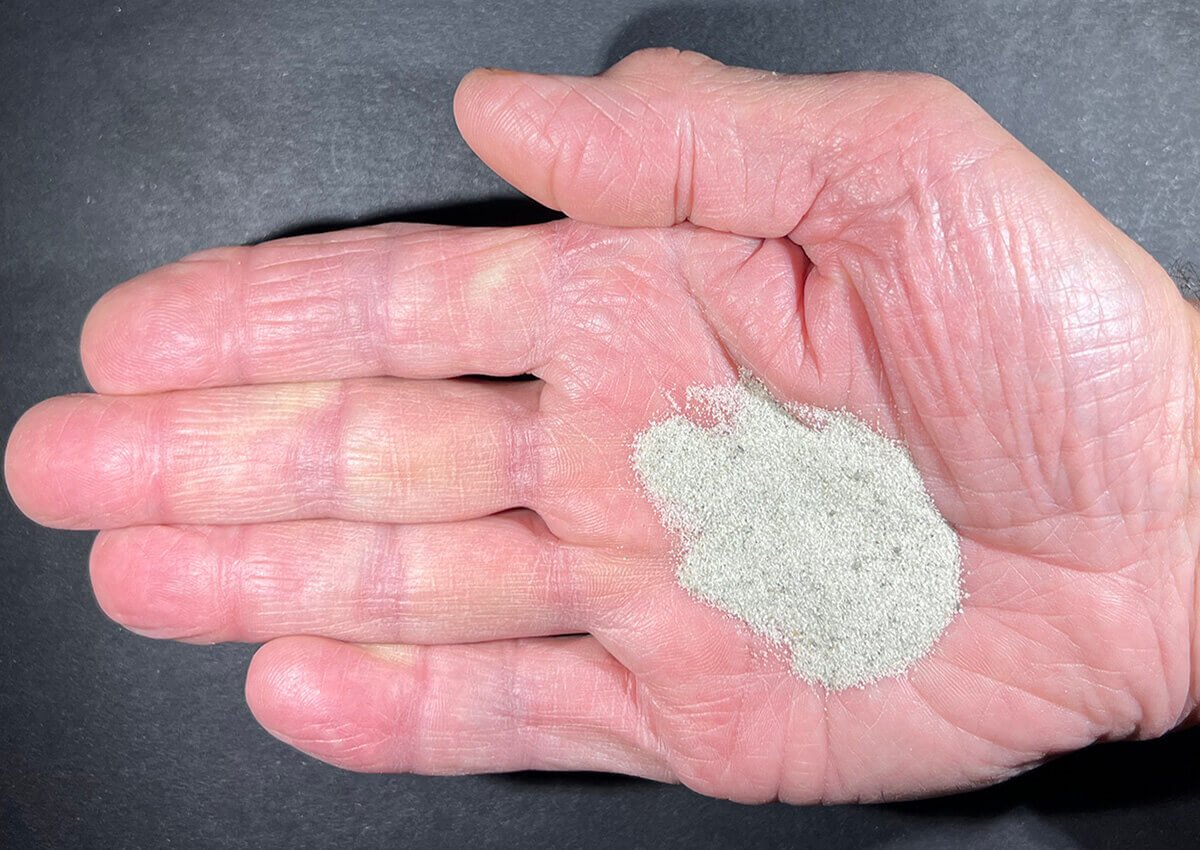
The Falkland Islands are a remote South Atlantic archipelago with rugged terrain and cliff-lined coasts located on a projection of the Patagonian continental shelf that broke away from Africa 400 million years ago and drifted westwards. Beach sand at Gypsy Cove is primarily quartz and feldspar with occasional mollusk shell sand grain fragments.
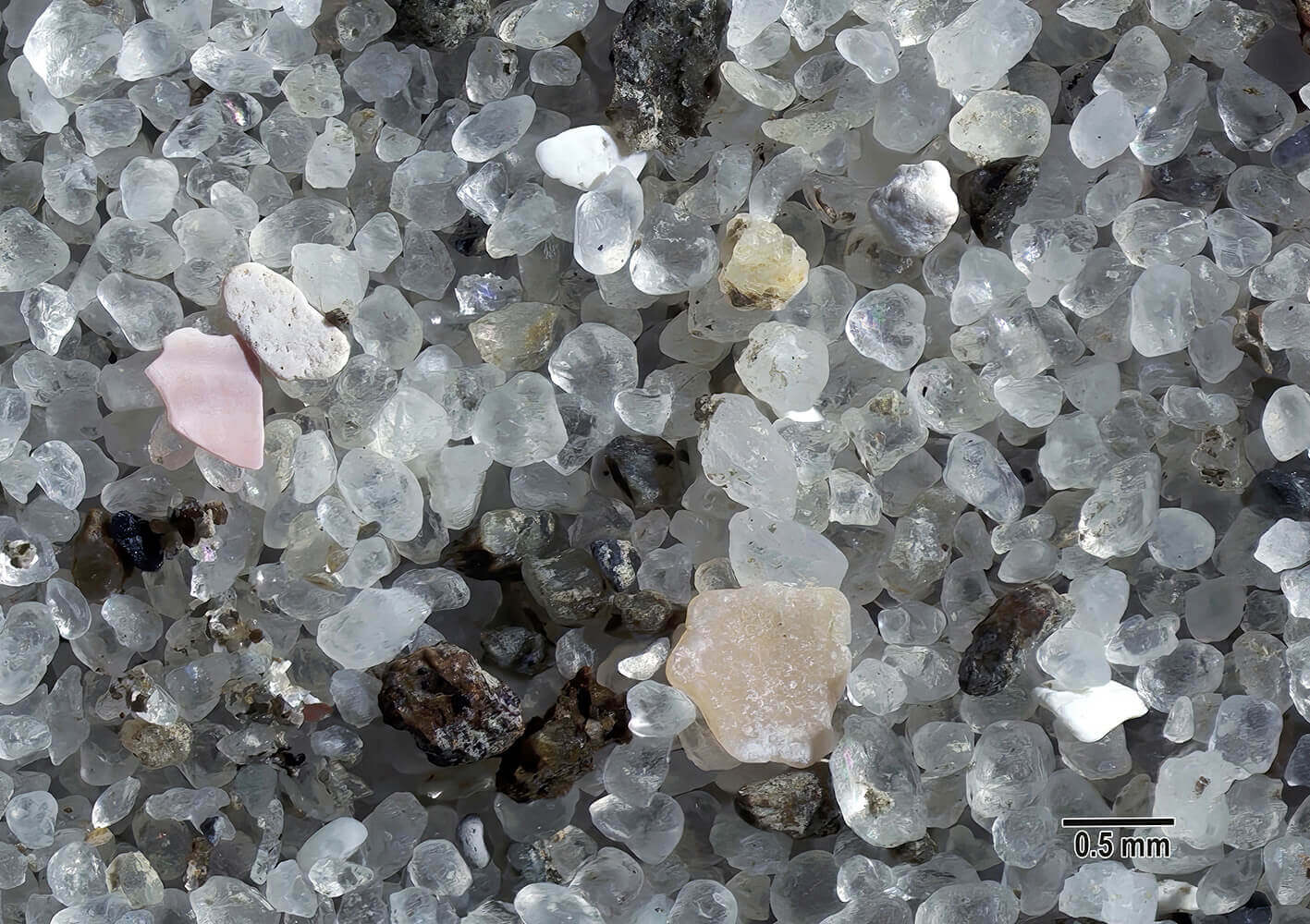
Beach sand at Gypsy Cove is predominantly geological and mostly quartz and feldspar and other dark granular grains. Occasional marine sand grains in this sample include a light pink triangular mollusk shell fragment next to a white marine fragment with evidence of bioerosion. Two other white sand grains as well as a square light tan fragment are marine shells, likely mollusks.
Geographic Overview
Located just six miles from Stanley, Gypsy Cove, a sheltered bay with white sandy beaches, is a scenic gem and home to a small breeding colony of Magellanic Penguins.
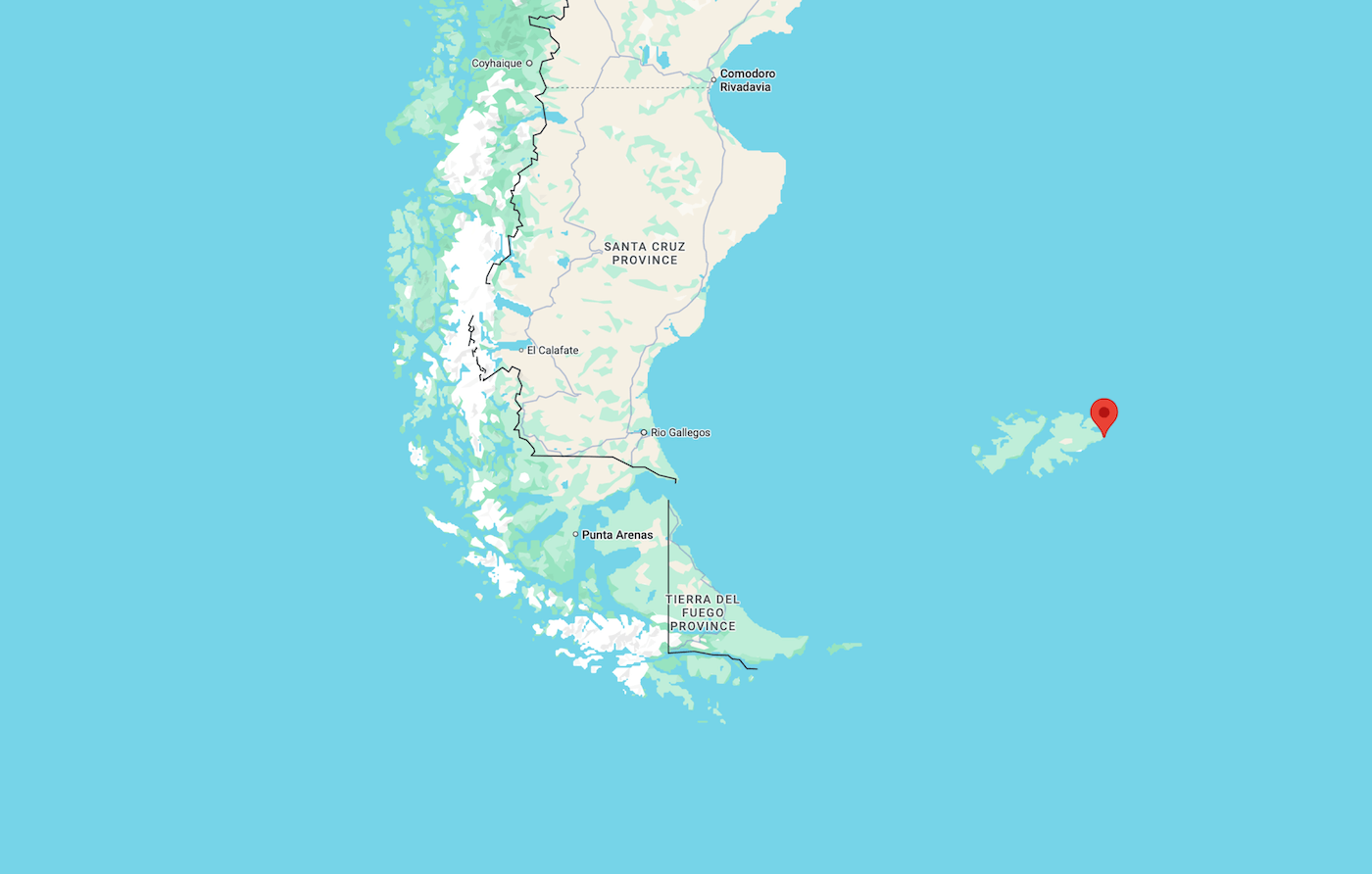
Sand Location
See where this sand sample was collected on Google Maps.

Virtual Sand Tour
Explore an interactive map of Gypsy Beach on Google Earth.
Sand Gallery

Partly transparent as well as partly opaque quartz grains comprise the majority of sand grains in this sample along with a couple of small black geological sand grains. A few of the quartz grains have punctate dark inclusions. Marine sand grains include a light pink shell fragment at the upper left of center and a white shell fragment next to a tan bit of sea urchin spine both at the lower right of center.
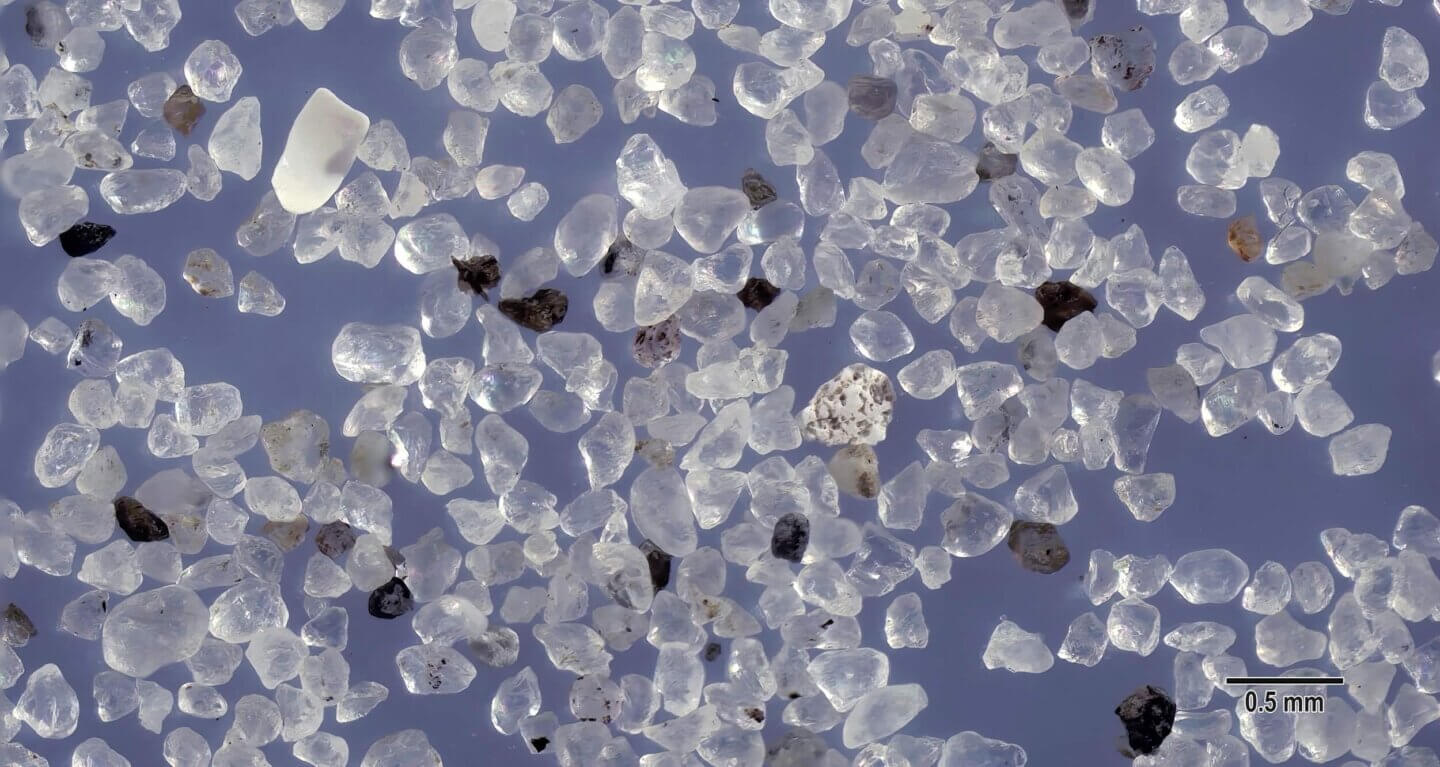
A few unidentified black sand grains are scattered among smoothly rounded quartz sand grains. Some quartz grains have punctate black inclusions. An off-white rectangular mollusk shell fragment at the upper left and a white shell fragment with evidence of bioerosion at the center of this view represent marine sand grains.

Clear and opaque quartz grains, some with punctate black inclusions, are present along with some darker geological sand grains. The quartz grains have relatively smooth edges indicative of long exposure to waves and wind. Two off-white fragments of mollusk shell, one with pinkish tan coloration, represent marine sand grains in this view.
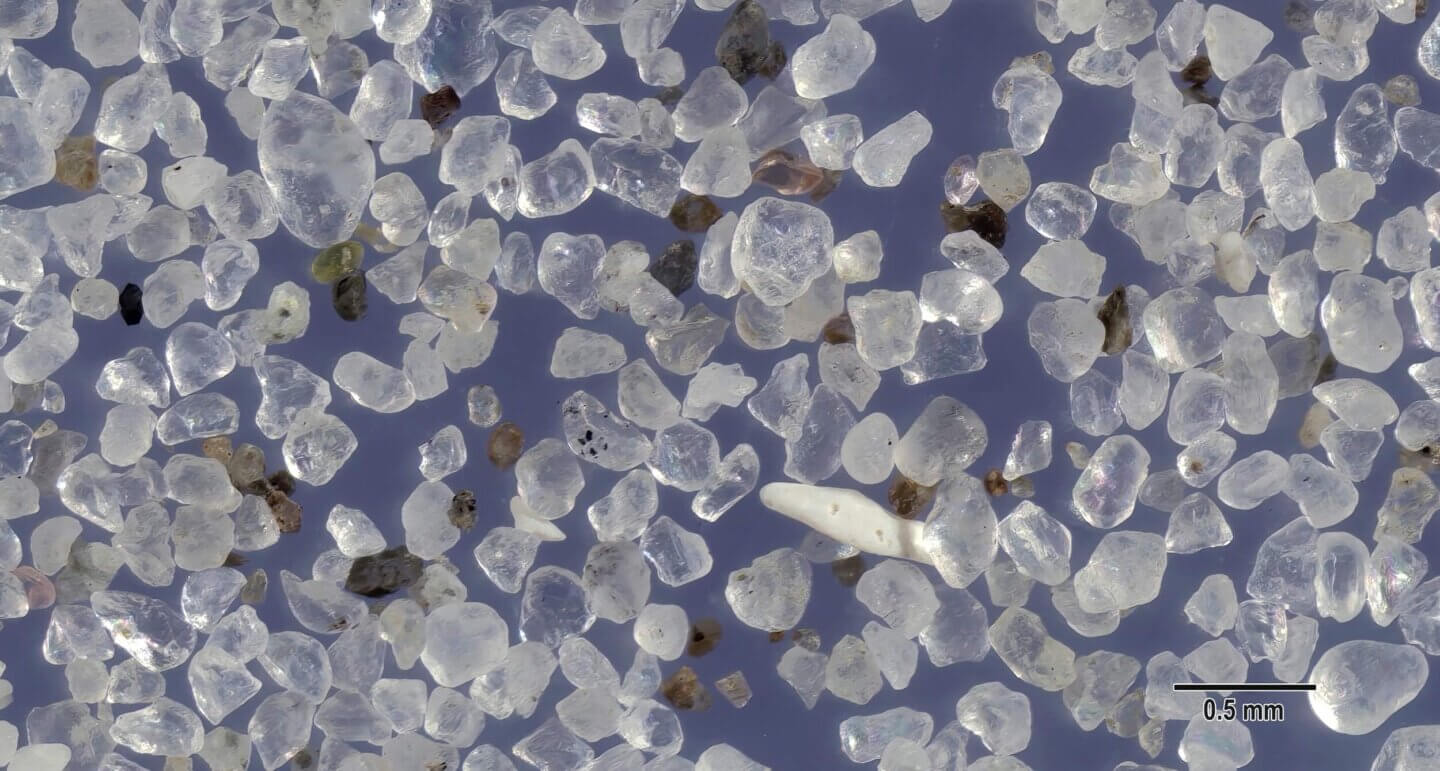
Geological sand grains in this view include small and large clear and translucent quartz grains, tan and greenish quartz grains, and quarts grain with small and large black inclusions. An elongated smooth white mollusk shell fragment is at the lower center of this sample.

Clear and opaque sand grains represent some smoothly worn quartz and feldspar along with some grains with somewhat sharper angles. Darker grains are also geological but unidentified. A tan marine shell fragment is present lower left of center and a smoothly worn pink and white mollusk shell is present at the middle right of this view.
